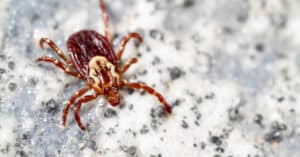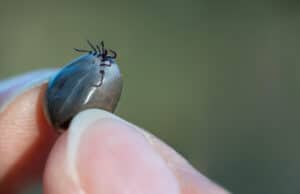If you’ve spent any time outdoors, then you’ve probably been told to watch out for ticks. You may have even been bitten by one or found one on your dog. And you likely know what ticks in the wild look like, and how to avoid them. But, do you know how to spot engorged types of ticks? Ticks only become engorged after taking their fill of blood, sometimes from a human, and oftentimes from an animal. An engorged tick looks almost unrecognizable when compared with a non-engorged tick. That’s why, here, we’ll discover exactly how to recognize and remove an engorged tick when you find one.
Read on to discover everything you ever wanted to know about engorged types of ticks. We’ll start by learning a few key steps you can take to prevent tick bites and finish by exploring the warning signs of tickborne illness.
Preventing Tick Bites
The first step in preventing tick bites is learning what ticks live in your state, and where they like to hang out. Ticks generally hibernate in the winter, and many are most active in the late spring and summer. Next, if you’re going to a tick-infested area, be sure to wear light-colored clothes, with long sleeves and full-length pants. You can also spray your clothing with permethrin-containing insect repellant. Finally, be sure to perform a tick check on both yourself and your children or dogs once you’re done.
Engorged Ticks
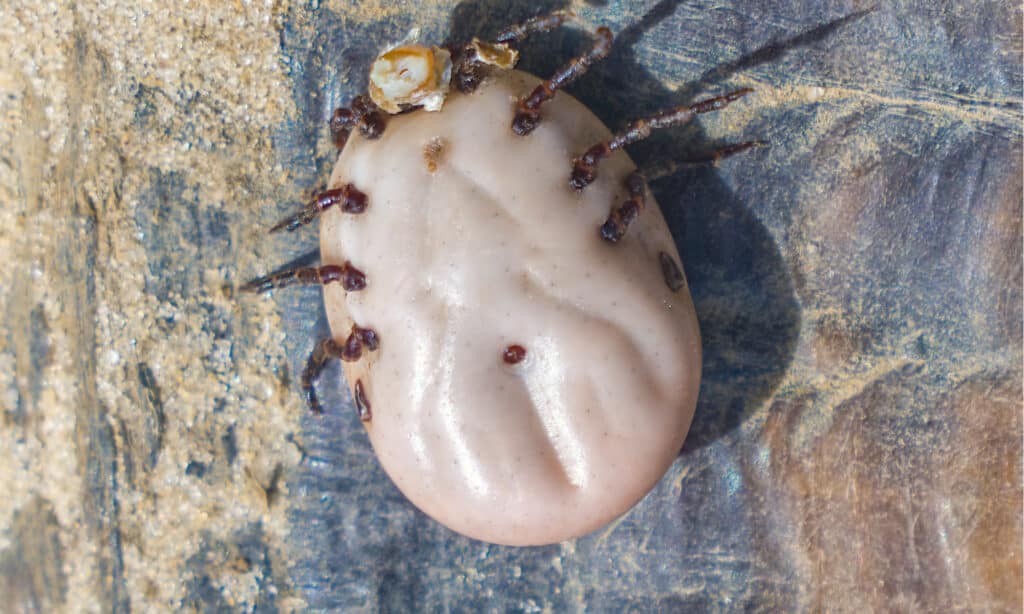
Engorged ticks are also known as white ticks.
©iStock.com/Dan Rieck
An engorged type of tick is one that has attached to a host and fed on blood for a period of anywhere from several hours to several days, depending on the species. Before feeding, ticks are tiny (about the size of a sesame seed, or smaller), and dark brown or black. However, when fully engorged, they increase to up to two-thirds of an inch across. Engorged ticks are also known as white ticks, because, as they fill with blood, their bodies turn white or gray.
Can You Identify Different Types of Engorged Ticks?
There are several common species of tick in the United States, including wood ticks, dog ticks, blacklegged ticks, and lone star ticks. When they’re not an engorged type of tick, it’s generally easy to tell which species you’re looking at. But, when fully engorged, it becomes very difficult to distinguish species. But, just why do you want to know what kind of tick is attached to you, or your furry friend?
The answer is that only certain types of ticks carry Lyme disease, so knowing what kind of tick bit you is very important. The blacklegged tick is the only kind of tick known to transmit Lyme disease, though other species carry a variety of diseases as well.
How to Identify an Engorged Tick on Your Dog
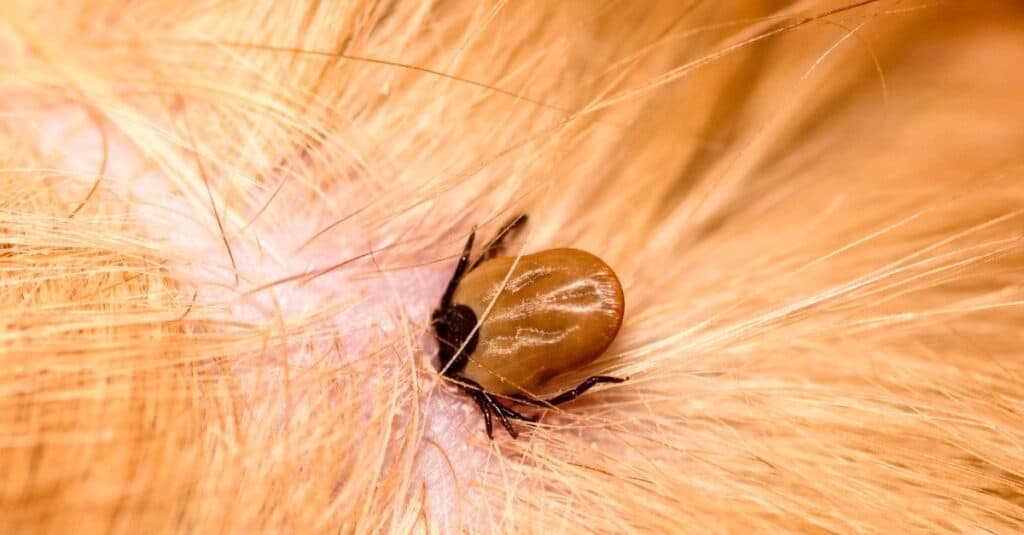
Ticks can get attached anywhere on the dog’s skin.
©iStock.com/IgorChus
Engorged types of ticks on dogs may feel at first like age warts or supernumerary (extra) nipples. Visually, they may look like a small, white-gray grape attached to the dog’s skin. Ticks can attach anywhere but are most commonly found in areas where the fur is thin, like bellies, ears, and armpits. If you think there may be an engorged tick attached to your dog, try not to bother with it until you’re ready to remove it. This may take more than one person and adequate preparation.
How Long Does it Take for Ticks to Become Engorged?
Ticks are parasite hematophagous, i.e. they only eat blood. The length of time it takes for a tick to become engorged depends on which stage of life it is in. Young ticks, known as nymphs, become engorged in 2-3 days. For adults, it may take anywhere from 4-7 days to reach full engorgement.
How to Remove a Tick
If you find an engorged type of tick, you only need two things to remove it: good tweezers, and alcohol wipes or rubbing alcohol (soap and water also work if alcohol isn’t available).
When you’re ready to remove the tick, simply grasp it with the tweezers as close to the skin as possible. Then, without crushing the tick, pull evenly away from the skin, until the tick comes away. Do not attempt to use Vaseline to smother the tick, and never attempt to burn it with a match. These methods do not work. Tick removal may seem scary, but it’s actually very simple. Clean the bite area with the alcohol, and either flush the tick down the toilet or place it in a sealed bag with alcohol to throw away.
Warning Signs: Tickborne Illness
After you’ve removed an engorged type of tick, be sure to monitor for any symptoms of illness. These primarily include fever or chills, muscle aches, joint pain, and severe headaches. It’s also important to watch the bite site for signs of rash. If you think you may have contracted a tickborne illness, contact your primary care physician immediately.
Do Ticks Fall Off When Fully Engorged?
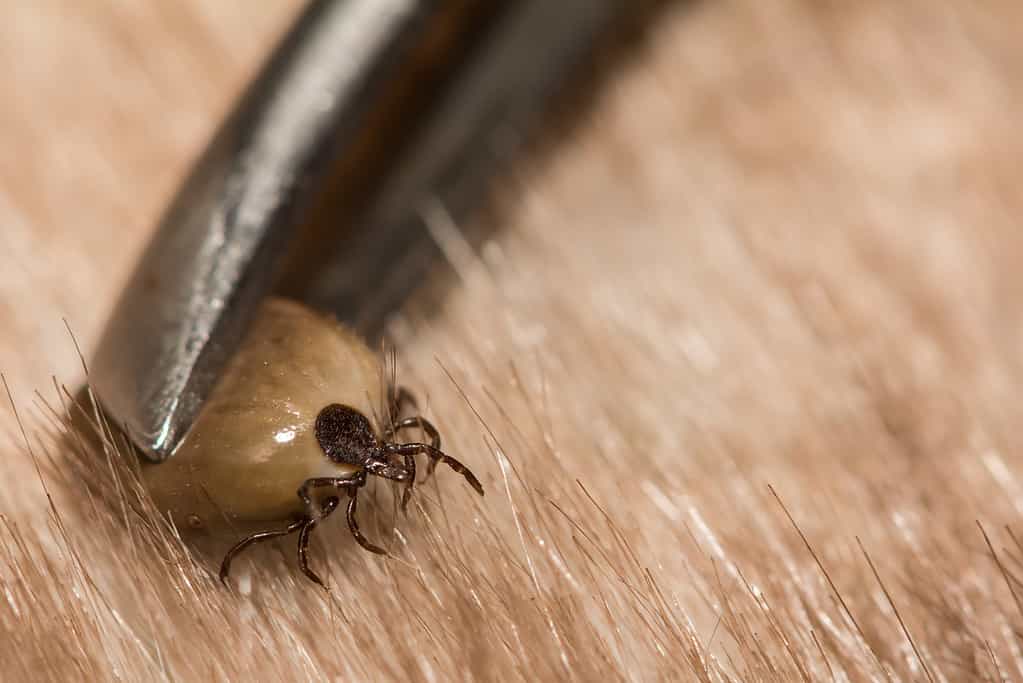
Once a female tick has become engorged, she will fall off her host, lay eggs, and die.
©JasonOndreicka/iStock via Getty Images
Unlike some other insects, in particular the mosquito, both the males and females of the tick species bite and feed on blood. They both insert their barbed, straw-like mouthparts into the skin of their hosts. However, it is only the female that will drink until the point where it becomes engorged. Male ticks do not enlarge a significant amount or feed as greatly as the females. They are mainly there to mate and will detach themselves from feeding to search for females. Males will even at times feed on the already engorged female.
Once the female has become engorged, she will fall off her host, lay eggs, and die. A typical timeframe for this to occur is 36 to 48 hours, which is when she will change shape to one of a more spherical appearance.
The photo featured at the top of this post is © Afanasiev Andrii/Shutterstock.com
Sources
- , Available here: https://www.cdc.gov/ticks/index.html
- , Available here: https://extension.umn.edu/yard-and-garden-insects/ticks
Thank you for reading! Have some feedback for us? Contact the AZ Animals editorial team.




